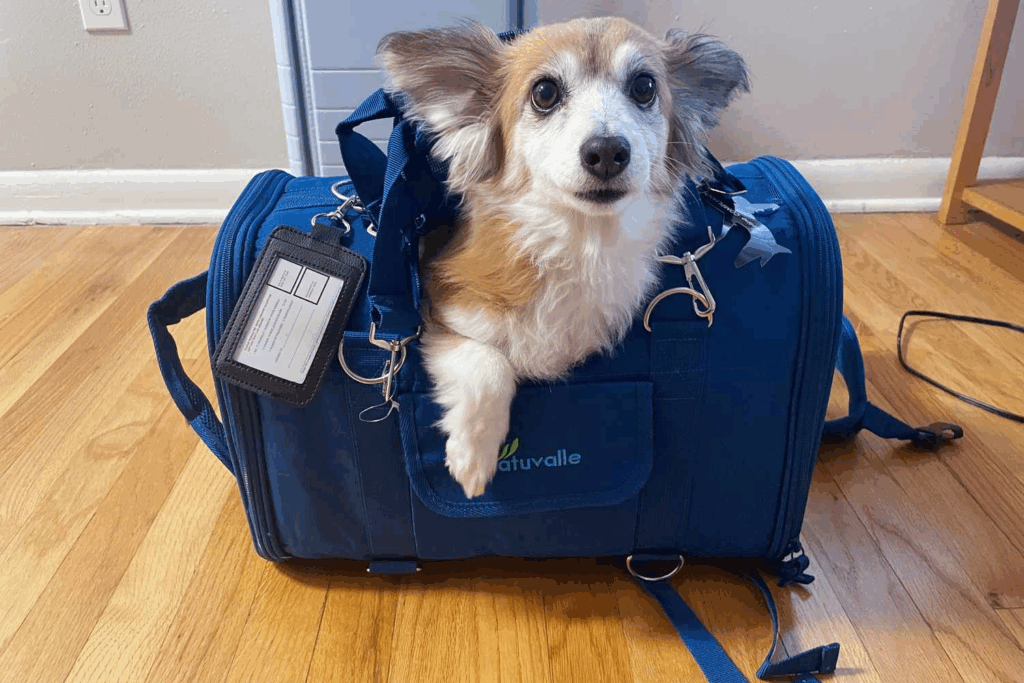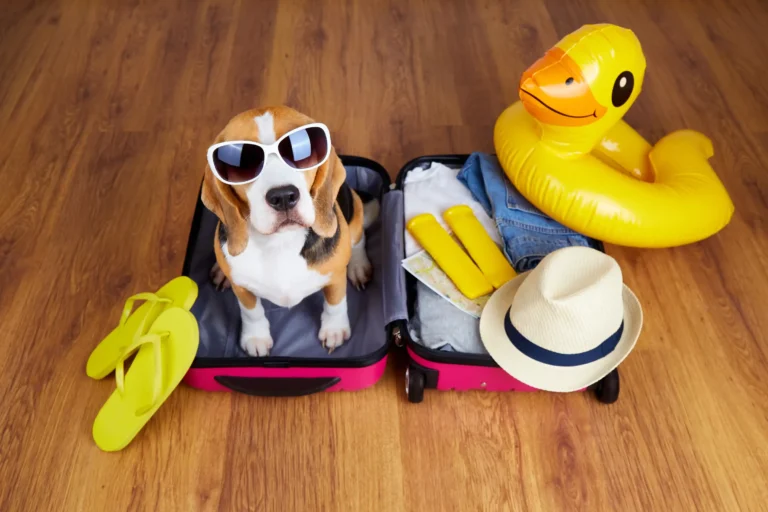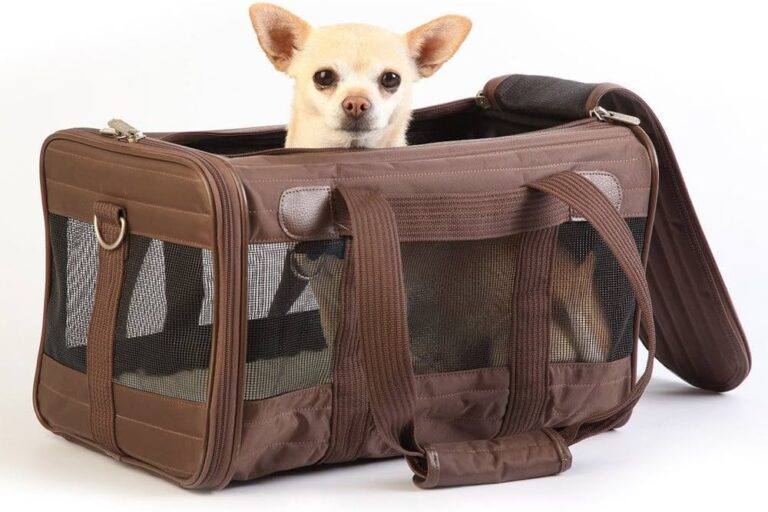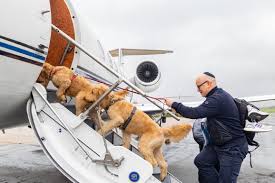Travelling with your small pup can be both an exciting and daunting experience. Ensuring comfort for your four-legged friend while on the go becomes a priority, especially when it involves long journeys. This comprehensive guide titled “Travel in Style: Tips for Keeping Your Small Pup Comfortable on the Go!” will cover all the essential tips and strategies to ensure your furry pal enjoys the trip as much as you do.
We understand that every detail matters when it comes to your beloved pet. Therefore, we will delve into a variety of topics, ranging from selecting the right travel gear to providing a balanced diet during transit. Rest assured, each tip has been carefully researched to cater to the unique needs of small pups, enhancing their travel experience manifold.
In addition, you will discover handy tips on how to maintain your pet’s hygiene while travelling. We’ll discuss everything from portable water bowls to compact grooming tools, ensuring your little companion is always feeling fresh and clean, even on the road. We’ll also address common travel-related issues like motion sickness in dogs, offering proven remedies to keep them at bay.
Furthermore, we will discuss the importance of keeping your pup entertained during the journey. Be it chew toys or interactive games, we will explore various ways to keep your pet engaged and stimulated, reducing their anxiety levels and ensuring they remain content throughout the journey.
In conclusion, this guide is designed to equip you with practical and effective solutions for travelling with your small pup. With these tips, you can ensure your furry friend’s comfort and safety, making the journey an enjoyable experience for both of you. So, buckle up and get ready for some quality travel time with your small pup! 🐾🚗
Choosing the Right Carrier for Your Small Pup
Choosing the perfect carrier for your small pup is a crucial step to ensure comfort during your travels. To ensure maximum comfort, you should take into account a few considerations. First and foremost, the size of the carrier matters a lot. It should be spacious enough for your pup to move around easily but compact enough for easy transport.
The material of the carrier is another significant factor. It needs to be durable, lightweight, and easy to clean. Also, the carrier must have proper ventilation to ensure a comfortable environment for your dog. A well-ventilated carrier will prevent overheating and provide fresh air for your pup.
Hard vs. Soft Carriers
You can find two main types of carriers in the market: hard and soft. Hard carriers are usually more robust, offering better protection. They are perfect for long trips, particularly if you’re traveling by air. However, they can be quite heavy and challenging to carry around.
On the other hand, soft carriers are lightweight and easy to carry. They also tend to be more comfortable for your pup, especially for short trips. However, they might not provide as much protection as their hard counterparts.

Training Your Pup for Travel
It’s essential to train your pup to stay calm and comfortable during your trips. You can start by introducing your dog to the carrier at home. Let them explore it and get used to it before you use it for travel.
Building Positive Associations
Building positive associations with the carrier can make your pup more comfortable during travel. You can use treats, toys, or even their favorite blanket to make the carrier more appealing. The aim is to make your dog view the carrier as a safe and comfortable space.
Keeping Your Pup Entertained
Keeping your pup entertained during travel is crucial for their comfort. You can bring along toys or treats to keep them busy. Chewing toys, in particular, can be quite beneficial as they can help relieve stress and anxiety.
Interactive Toys
Interactive toys can be great for keeping your pup engaged during travel. These toys require your pup to perform certain actions to get a reward, such as a treat. This can keep them occupied for extended periods, reducing their stress levels.
Ensuring Regular Breaks
During long trips, it’s essential to ensure regular breaks for your pup. These breaks will allow your dog to stretch their legs, get some fresh air, and relieve themselves. It’s recommended to have a break every two to three hours.
Importance of Hydration
During these breaks, it’s important to keep your pup hydrated, especially during hot weather. Make sure to bring along plenty of water and a portable water dish for your pup.
Comfortable Bedding
Comfortable bedding is another crucial aspect to ensure your pup’s comfort during travel. A soft and plush bed can provide the needed support and warmth for your pup, making the travel experience more enjoyable.
Choosing the Right Bedding
When choosing bedding for your pup’s carrier, you should consider the material and size. The bedding should be made of soft, breathable material and be large enough to fit your pup comfortably.
Understanding Airline Regulations for Pet Travel
When planning a trip with your small pup, understanding airline regulations is crucial to ensure a smooth and stress-free journey. Airlines have different requirements when it comes to pet travel, and these can vary significantly depending on the destination and the airline itself. Some airlines may allow small dogs to travel in the cabin if they are in an approved carrier that fits under the seat, while others might only permit pet transport in the cargo hold.
It is important to review these policies carefully well before your travel date. Pay close attention to details such as the maximum carrier dimensions, pet fees, weight limits, and any breed restrictions that might apply. Some airlines may also require advance booking for pets, as there are often limits on the number of animals allowed per flight.
In addition, international travel usually involves more stringent requirements. You might need to check import regulations for the destination country, as some nations enforce strict quarantine policies, mandatory vaccinations, or additional documentation.
Preparing Essential Documentation
Ensuring that you have all necessary documentation for your pup is a vital part of travel preparation. Most airlines require proof of vaccinations, particularly rabies, and a health certificate issued by a licensed veterinarian within a certain time frame before travel, often within ten days.
Additional paperwork may be needed if you are traveling internationally. This might include microchip registration details, tapeworm treatment certifications, or import permits depending on the country. Always carry both physical and digital copies of these documents to avoid any complications during check-in or arrival.
Creating a well-organized folder containing all your dog’s paperwork will save time and stress during your journey. Include vaccination records, health certificates, identification tags, recent photos of your pup, and emergency contact information for your vet.
Choosing Between Cabin and Cargo Travel
When given the option, traveling with your pup in the cabin is generally preferred for safety and comfort reasons. Being close to you provides reassurance for your pup and allows you to monitor their condition during the flight.
However, not all dogs meet the size or weight requirements for cabin travel. If your pup must travel as cargo, it is essential to choose a reputable airline with a strong record for pet safety. You should also ensure that the cargo area is temperature-controlled and pressurized. Always label your pup’s carrier with your name, address, and phone number, and provide clear instructions regarding feeding and care.
Selecting an Airline-Approved Carrier
Choosing the right carrier is critical for both your pup’s comfort and meeting airline requirements. An airline-approved carrier must generally be leak-proof, well-ventilated, and secure. Soft-sided carriers are often preferred for cabin travel due to their flexibility in fitting under seats, but always double-check the allowed dimensions.

The carrier should be large enough for your pup to stand, turn around, and lie down naturally. Place absorbent pads inside in case of accidents and provide familiar bedding or a blanket with your scent to comfort your dog during the flight.
Managing Feeding Schedules Before and During Travel
Feeding your pup properly before travel can make a significant difference in their comfort and health. It is advisable to feed your dog a light meal about four to six hours before departure. This timing gives them enough opportunity to digest their food and relieve themselves before the trip begins.
Avoid feeding your pup right before or during the flight to minimize the risk of nausea or vomiting due to motion sickness. If the flight is particularly long, you can consult your veterinarian about offering small treats or light snacks during scheduled breaks.
Always ensure your pup stays hydrated. Carry a portable water dispenser and offer small amounts of water during layovers or appropriate intervals, being cautious not to overfill their stomach.
Recognizing Signs of Travel-Related Stress
Even with the best preparation, travel can be stressful for some dogs. It is essential to recognize signs of travel-related stress, which may include excessive panting, whining, shaking, drooling, or attempting to escape from the carrier.
If you notice these behaviors, remain calm and provide comfort by speaking softly or gently stroking your pup through the carrier. Avoid opening the carrier unless absolutely necessary, especially during the flight. If your dog has a history of severe travel anxiety, consult your veterinarian prior to departure. They may recommend natural calming aids or, in some cases, mild sedatives specifically approved for pet travel.
Importance of Veterinary Health Checks
Scheduling a veterinary check-up before traveling is not just a regulatory requirement; it is crucial for ensuring your pup’s well-being. During this appointment, your vet can confirm that your dog is fit to travel, administer any necessary vaccinations, and provide tips for managing travel-related issues.
Be sure to discuss any specific concerns you have about your pup’s health, such as respiratory conditions, heart issues, or chronic anxiety. Your vet may also suggest preventive measures, including flea, tick, and heartworm medications, especially if traveling to a region where these parasites are common.
Preparing for Security Screening with Your Pup
Airport security procedures for traveling with pets can be intimidating if you are not prepared. In most cases, you will be asked to remove your dog from the carrier while the carrier is screened separately through the X-ray machine.
To make this process easier, train your dog to be comfortable being carried or walking on a leash through a busy and noisy environment. Hold your pup securely, or use a harness and leash, while passing through the metal detector. After clearing security, immediately place your pup back into the carrier to ensure their safety.
Creating a Comfortable Travel Environment
Making the travel environment as comfortable as possible for your pup can dramatically improve their travel experience. Aside from a cozy carrier, bring along items that are familiar and comforting, such as their favorite toy or a piece of clothing that carries your scent.
Use calming pheromone sprays designed for pets, which can help create a more soothing atmosphere inside the carrier. Keep external stimuli to a minimum by choosing a quiet seating area at the airport and shielding your pup from excessive noise and unfamiliar interactions.
Strategies for Reducing Motion Sickness
Motion sickness in dogs can disrupt an otherwise smooth journey. Common symptoms include drooling, yawning, lip licking, and vomiting. To reduce the likelihood of motion sickness, avoid feeding your dog a heavy meal before travel and keep their carrier well-ventilated.
Some dogs benefit from having a direct view outside, while others prefer being in a darker, enclosed space. Observe your pup’s preferences during car rides and replicate the environment that makes them feel most comfortable.
In more severe cases, your vet may prescribe medication to prevent nausea during travel. Always test any medications or supplements before your actual travel date to monitor for any adverse reactions.
Importance of Exercise Before Departure
Giving your dog plenty of exercise before the trip can help expend excess energy and reduce anxiety. A long walk or play session on the morning of your flight allows your pup to burn off nervous energy, making them more likely to relax and rest during the journey.
Physical activity also encourages your pup to relieve themselves before the trip, minimizing accidents while traveling. Tailor the level of exercise to your dog’s breed, age, and health condition.
Conclusion
In conclusion, traveling in style with your small pup doesn’t have to be a daunting task. With the right approach, it can be a comfortable and enjoyable experience for both you and your furry friend. Implementing these practical tips, from investing in a high-quality carrier to maintaining a consistent feeding and bathroom schedule, can greatly enhance your pup’s comfort during travel.
Moreover, considering your pup’s individual needs is crucial to their wellbeing while on the go. Each dog is unique and might require different adjustments or travel accessories. So, don’t hesitate to get to know your small companion better and adapt these recommendations accordingly.
Not to mention, maintaining a calm demeanor and showering your pup with love can make all the difference. Remember, your dog looks up to you for cues on how to react, so projecting calmness can help them remain relaxed during your journey.
Lastly, preparation is key. Pack essentials like toys, blankets, and treats to help your dog feel safe and secure. But most importantly, enjoy the shared experiences and create unforgettable memories with your small pup while traveling in style. After all, they are not just pets, they are our family.
In the end, it’s all about making the journey as comfortable as possible for your little four-legged travel companion. Safe travels!



